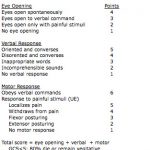When I was at Penn 25 years ago, I was fascinated to see that police officers were allowed to transport penetrating trauma patients to the hospital. They had no medical training and no specific equipment. They basically tossed the patient into the back seat, drove as fast as possible to a trauma center, and dropped them off. Then they (hopefully) hosed down the inside of the squad car.
Granted, it was fast. But did it benefit the patient? The group now at Penn decided to look at this to see if there was some benefit (survival) to this practice. They retrospectively looked at 5 years of data in the mid-2000’s, thus comparing the results of police transport with reasonably state of the art EMS transport.
They found over 2100 penetrating injury transports during this time frame (!), and roughly a quarter of those (27%) were transported by police. About 71% were gunshots vs 29% stabs. They found the following interesting information:
- The police transported more badly injured patients (ISS=14) than EMS (ISS=10)
- About 21% of police transports died, compared to 15% for EMS
- But when mortality was corrected for the higher ISS transported by police, it was equivalent for the two modes of transport
Although they did not show a survival benefit to this practice, there was certainly no harm done. And in busy urban environments, such a policy could offload some of the workload from busy EMS services.
Bottom line: Certainly this is not a perfect paper. But it does add more fuel to the “stay and play” vs “scoop and run” debate. It seems to lend credence to the concept that, in the field, less is better in penetrating trauma. What really saves these patients is definitive control of bleeding, which neither police nor paramedics can provide. Therefore, whoever gets the patient to the trauma center in the least time wins. And so does the patient.
Related posts:
Reference: Injury-adjusted mortality of patients transported by police following penetrating trauma. Acad Emerg Med 18(1):32-37, 2011.


